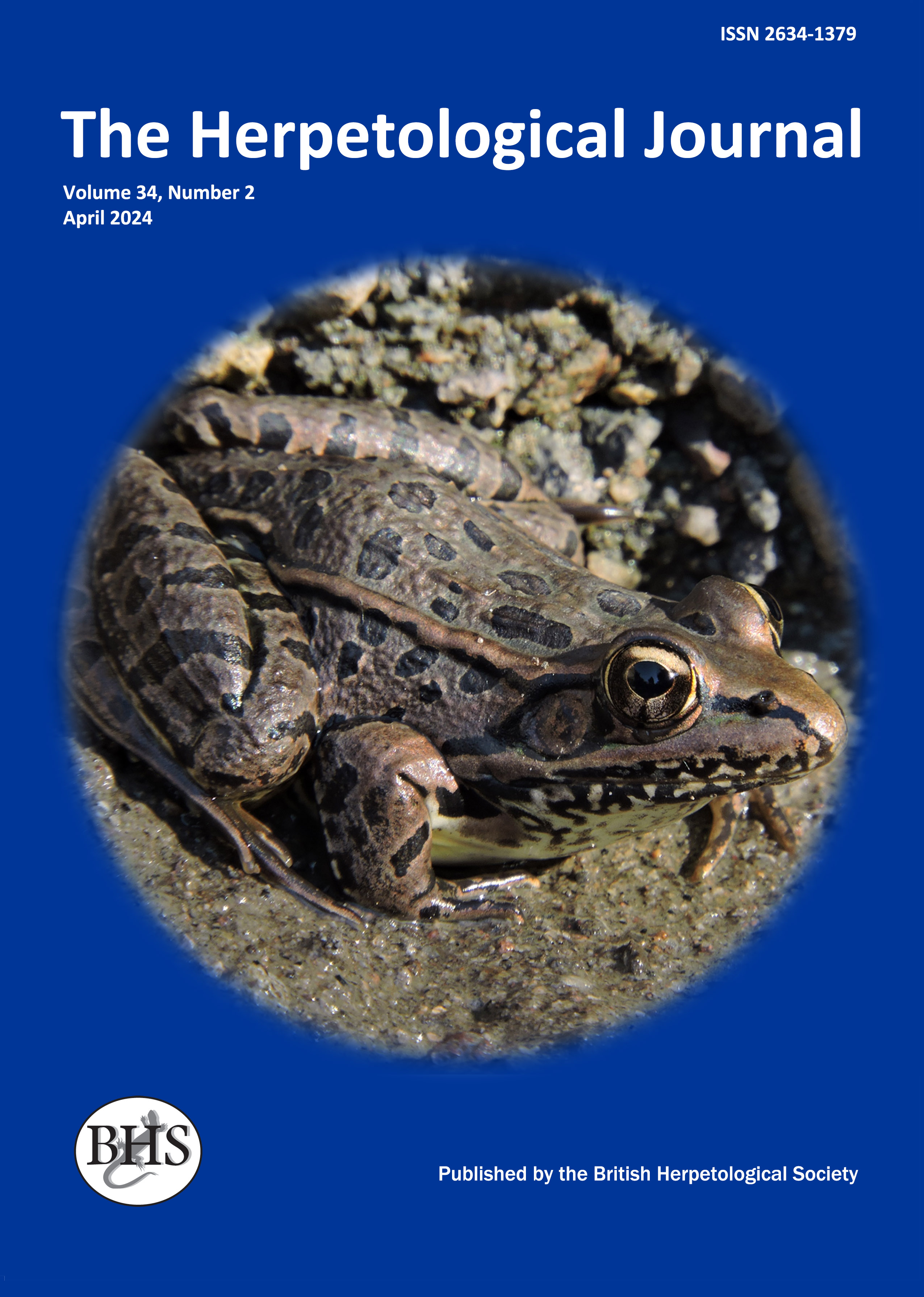
The Herpetological Journal
The Herpetological Journal is the Society's prestigious quarterly scientific journal. Articles are listed in Biological Abstracts, Current Awareness in Biological Sciences,Current Contents, Science Citation Index, and Zoological Record.
ISSN 0268-0130
2021 Impact Factor from Clarivate for the Herpetological Journal is 1.194, an increase of 0.332 from 2020.
pdf 03. Fungal pathogen infection intensity associated with reproductive mode and elevation in an afrotropical anuran community
291 downloads
Open Access
https://doi.org/10.33256/33.4.103110
pp. 103-110
Authors: Vanessa M. Marshall, Patrick J. McLaughlin, Juvencio Eko Mengue, Liscinia Josefa Bindang, Lauren A. Scheinberg, Christian Irian, Rayna C. Bell & C. Guilherme Becker
Abstract: The effects of host ecology and environmental conditions on infection dynamics of the amphibian chytrid fungus Batrachochytrium dendrobatidis (Bd) have been documented in several tropical and montane regions across the globe. These interactions are often complex and unique at local scales. Data on the historical and current chytridiomycosis-amphibian system is largely lacking in Africa, especially central Africa. We conducted the first survey of Bd in continental Equatorial Guinea in 2019, and extensively sampled the land-bridge island, Bioko, in 2011 and 2019. Our results provide novel information on the distribution and prevalence of Bd in Equatorial Guinea and demonstrate the effects of host developmental mode and elevation on Bd infections. We found that Bd infection loads are positively linked with elevation and that direct-developing species have higher average Bd loads than aquatic breeding species at all elevations. These patterns corroborate previous findings in afrotropical amphibian assemblages. Additionally, our study confirms the presence of Bd in continental Equatorial Guinea, providing updated information on the distribution of Bd in central Africa, and confirming the need for careful monitoring of this biodiverse region.
Los efectos de la ecología del huésped y las condiciones ambientales en la dinámica de infección del hongo quítrido anfibio Batrachochytrium dendrobatidis (Bd) se han documentado en varias regiones tropicales y montañosas de todo el mundo. Estas interacciones suelen ser complejas y únicas a escala local. Los datos sobre el sistema quitridiomicosis-anfibios histórico y actual faltan en gran medida en África, especialmente en África central. Realizamos la primera encuesta de Bd en Guinea Ecuatorial continental en 2019, y un muestreo extenso de la isla Bioko en 2011 y 2019. Nuestros resultados brindan información novedosa sobre la distribución y prevalencia de Bd en Guinea Ecuatorial y demuestran el efecto del modo de desarrollo del huésped y la elevación de las infecciones por Bd. Descubrimos que las cargas de infección por Bd están relacionadas positivamente con la elevación y que las especies en desarrollo directo tienen cargas promedio de Bd más altas que las especies acuáticas reproductoras a lo largo de la elevación. Estos patrones corroboran hallazgos previos en conjuntos de anfibios afrotropicales. Además, nuestro estudio confirma la presencia de Bd en Guinea Ecuatorial continental, proporcionando información actualizada sobre la distribución de Bd en África Central y confirmando la necesidad de un seguimiento cuidadoso de esta región biodiversa.
Keywords: Bioko, Equatorial Guinea, Bd infection load, amphibian conservation

